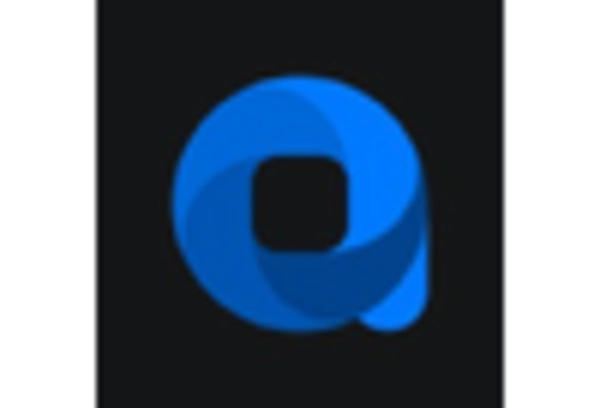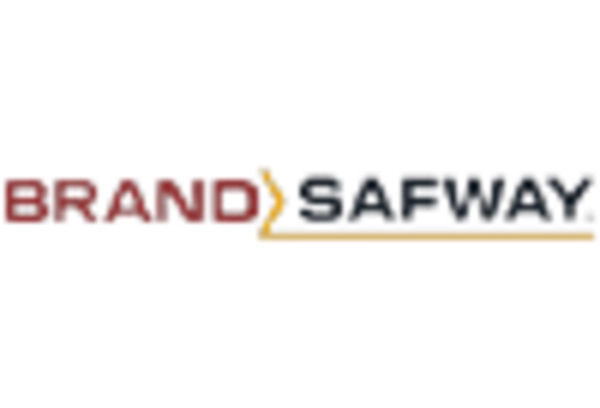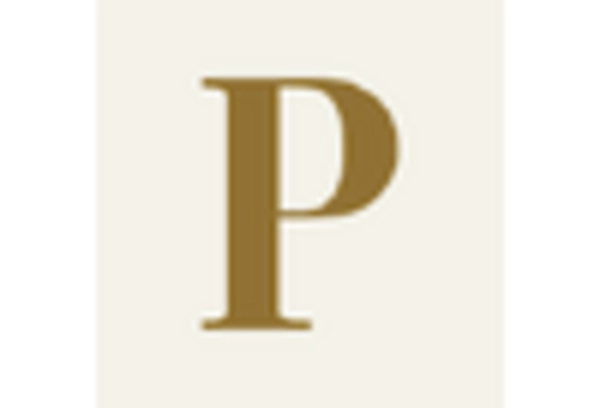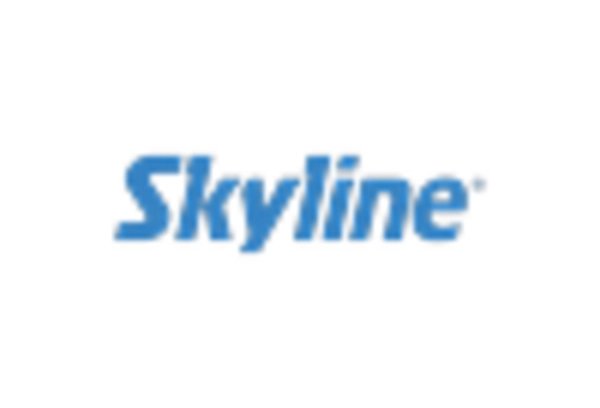Rising Construction Activities
The Construction Safety Net Market is poised for growth due to the rising construction activities across various sectors, including residential, commercial, and infrastructure development. As urbanization accelerates, the demand for new buildings and infrastructure projects increases, leading to a higher need for safety measures. Construction companies are increasingly recognizing the importance of implementing safety nets to protect workers and minimize liability. This trend is reflected in the projected increase in construction spending, which is expected to reach trillions of dollars in the coming years. Consequently, the market for safety nets is likely to expand, with estimates indicating a growth rate of approximately 5.5% as companies seek to enhance safety protocols in response to increased construction demands.
Stringent Regulatory Frameworks
The Construction Safety Net Market is significantly influenced by stringent regulatory frameworks that mandate the use of safety nets on construction sites. Governments and regulatory bodies are implementing more rigorous safety standards to protect workers from falls and other hazards. Compliance with these regulations is not only a legal requirement but also a moral obligation for construction companies. As a result, there is a growing demand for high-quality safety nets that meet these standards. The market is expected to expand as companies invest in compliant safety solutions to avoid penalties and enhance their reputation. This trend indicates a potential increase in market size, with estimates suggesting a growth rate of around 4.8% annually as firms prioritize safety compliance.
Growing Awareness of Occupational Safety
The Construction Safety Net Market is benefiting from a growing awareness of occupational safety among construction firms and workers. As safety culture becomes more ingrained in the industry, companies are investing in safety equipment, including safety nets, to protect their workforce. Training programs and safety workshops are being implemented to educate workers about the importance of using safety nets and adhering to safety protocols. This heightened awareness is likely to drive demand for safety nets, as companies strive to create safer work environments. The market is projected to grow at a rate of around 4.5% annually, reflecting the increasing commitment to occupational safety and the adoption of best practices in construction.
Technological Innovations in Safety Nets
The Construction Safety Net Market is experiencing a surge in technological innovations that enhance the performance and reliability of safety nets. Advanced materials, such as high-strength polyethylene and polypropylene, are being utilized to create nets that are lighter yet more durable. These innovations not only improve safety but also reduce costs associated with maintenance and replacement. The integration of smart technologies, such as sensors that monitor the integrity of the nets, is also emerging. This trend is likely to attract investments, as companies seek to adopt cutting-edge solutions to ensure worker safety. As a result, the market is projected to grow at a compound annual growth rate of approximately 5.2% over the next five years, reflecting the increasing demand for advanced safety solutions in construction.
Economic Growth and Investment in Infrastructure
The Construction Safety Net Market is closely linked to economic growth and increased investment in infrastructure projects. As economies recover and expand, governments and private entities are allocating more funds towards construction and infrastructure development. This influx of investment is likely to lead to a surge in construction activities, thereby increasing the demand for safety nets. Companies are recognizing that investing in safety measures is essential not only for compliance but also for enhancing productivity and reducing accidents. The market is expected to witness a growth rate of approximately 5.0% as the construction sector capitalizes on economic opportunities and prioritizes worker safety through the use of safety nets.

















Leave a Comment